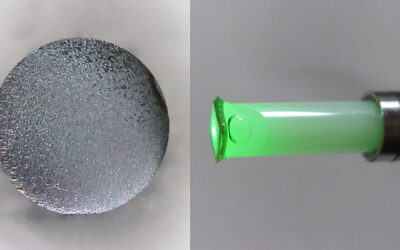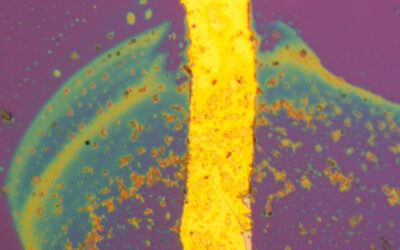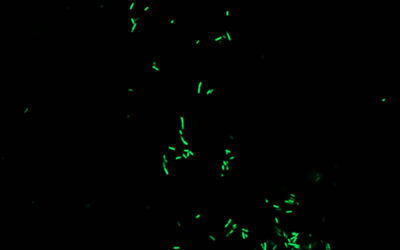 A device that essentially listens for light waves could help open up the last frontier of the electromagnetic spectrum—the terahertz range.
A device that essentially listens for light waves could help open up the last frontier of the electromagnetic spectrum—the terahertz range.
So-called T-rays, which are light waves too long for human eyes to see, could help airport security guards find chemical and other weapons. They might let doctors image body tissues with less damage to healthy areas. And they could give astronomers new tools to study planets in other solar systems. Those are just a few possible applications.
But because terahertz frequencies fall between the capabilities of the specialized tools presently used to detect light, engineers have yet to efficiently harness them. The U-M researchers demonstrated a unique terahertz detector and imaging system that could bridge this terahertz gap.
“We convert the T-ray light into sound,” said Jay Guo, U-M professor of electrical engineering and computer science, mechanical engineering, and macromolecular science and engineering. “Our detector is sensitive, compact and works at room temperature, and we’ve made it using an unconventional approach.”
The sound the detector makes is too high for human ears to hear.
The terahertz gap is a sliver between the microwave and infrared bands of the electromagnetic spectrum—the range of light’s wavelengths and frequencies. That spectrum spans from the longest, low-energy radio waves that can carry songs to our receivers to the shortest, high-energy gamma rays that are released when nuclear bombs explode and radioactive atoms decay.
In between are the microwave frequencies that can cook food or transport cell phone signals, the infrared that enables heat vision technologies, the visible wavelengths that light and color our world, and X-rays that give doctors a window under our skin.
The terahertz band is “scientifically rich,” according to Guo and colleagues. But today’s detectors either are bulky, need to be kept cold to work or can’t operate in real time. That limits their usefulness for applications like weapons and chemical detection and medical imaging and diagnosis, Guo says.
Guo and colleagues invented a special transducer that makes the light-to-sound conversion possible. A transducer turns one form of energy into another. In this case it turns terahertz light into ultrasound waves and then transmits them.
The transducer is made of a mixture of a spongy plastic called polydimethylsiloxane, or PDMS, and carbon nanotubes. Here’s how it works:
When the terahertz light hits the transducer, the nanotubes absorb it, turning it into heat. They pass that heat on to the PDMS. The heated PDMS expands, creating an outgoing pressure wave. That’s the ultrasound wave. It’s more than 1,000 times too high for human ears to pick up.
“There are many ways to detect ultrasound,” Guo said. “We transformed a difficult problem into a problem that’s already been solved.”
Though ultrasound detectors exist—including those used in medical imaging—the researchers made their own sensitive one in the form of a microscopic plastic ring known as a microring resonator. The structure measures only a few millimeters in size.
They connected their system to a computer and demonstrated that they could use it to scan and produce an image of an aluminum cross.
The response speed of the new detector is a fraction of a millionth of a second, which Guo says can enable real-time terahertz imaging in many areas.
The system is different from other heat-based terahertz detection systems because it responds to the energy of individual terahertz light pulses, rather than a continuous stream of T-rays. Because of this, it isn’t sensitive to variations in the outside temperature, Guo says.
Source: University of Michigan

















